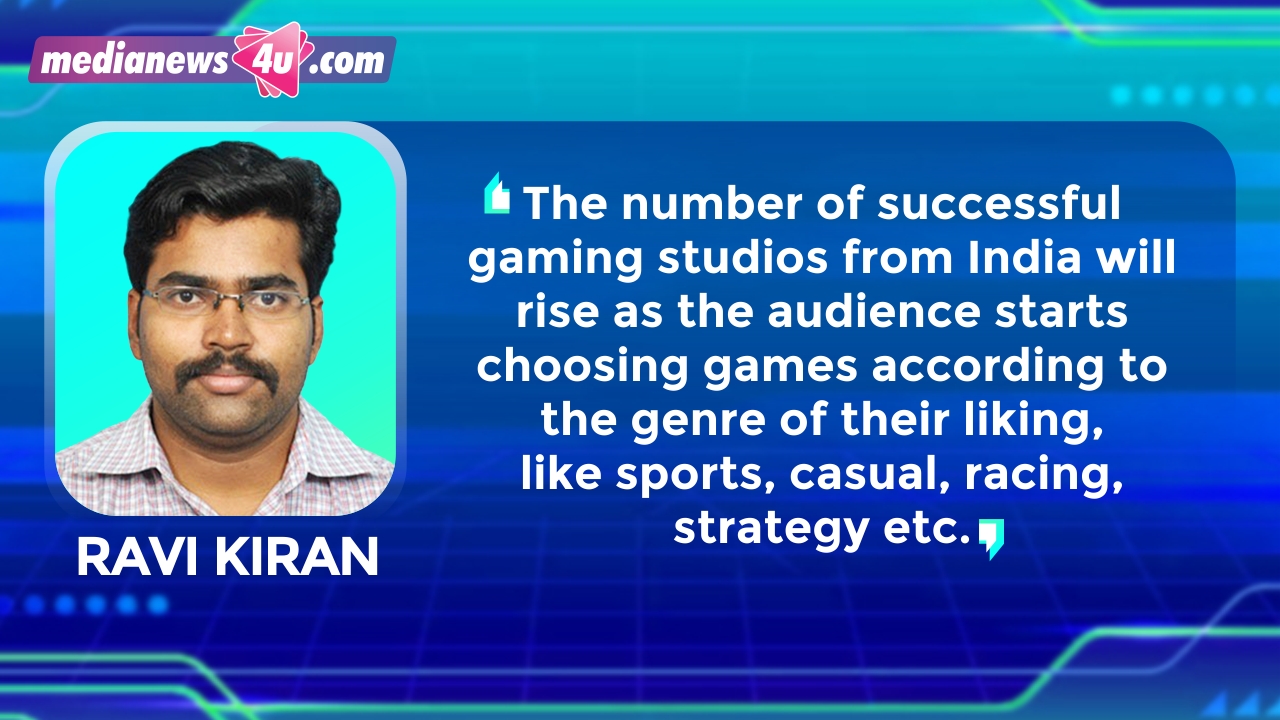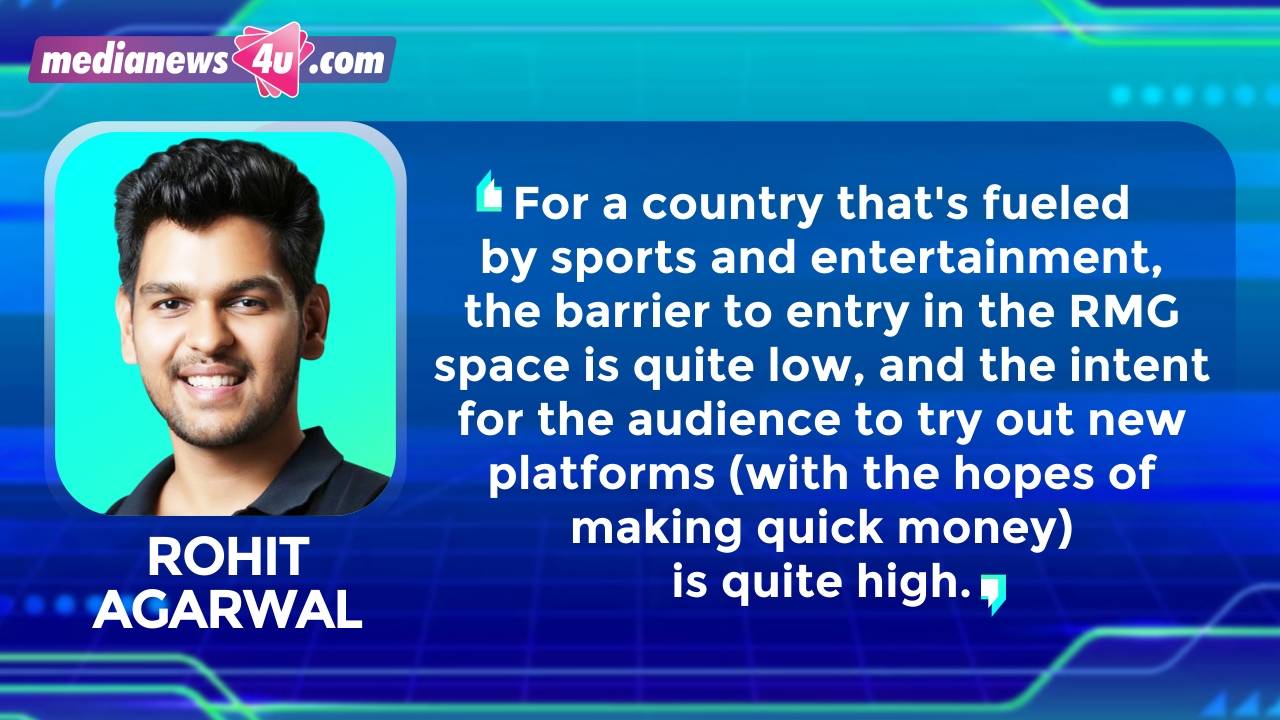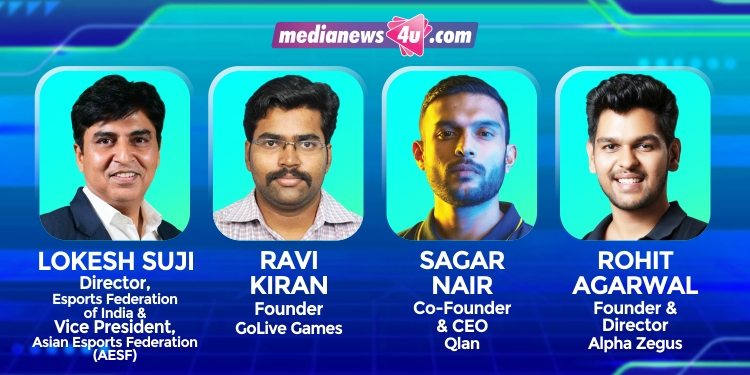Clash of Clans, League of Legends, Ludo King, Dream11, Candy Crush, FIFA – you name it and we have it! Our gaming industry indeed offers something for everyone. With India slowly becoming a hub and witnessing continuous strides in the gaming ecosystem, the Indian gaming industry is growing at a CAGR of 28 to 30 pc. Currently valued at $2.6 billion, the industry is expected to reach $8.6 billion by 2027 according to the Lumikai’s State of India Gaming Report (FY22).
As per the report, the number of gamers has moved from 450 million in 2021 to 507 million, growing at the rate of 12 pc and is expected to touch 700 million by 2027. The number of gaming companies meanwhile has skyrocketed from over 500 in 2021 to over 900 in a year.
We decided to ask a few industry experts if there’s a scope for all Indian gaming companies to survive and thrive.
Lokesh Suji, Director, Esports Federation of India & Vice President, Asian Esports Federation (AESF), says, “The growth of Indian gaming companies is a promising development that indicates the potential for a thriving Esports industry in India. However, it’s crucial for these companies to distinguish themselves through their USP as well as cater to the demands of the country’s gaming audience, to succeed in today’s competitive market. On top of that, those that can provide one-of-a-kind and immersive gaming experiences, or integrate advanced technologies in their games are likely to sustain and achieve long-term success.”
Ravi Kiran, Founder, GoLive Games, believes, “In the gaming industry, there will be a handful of companies successful in each genre and there are at least 16 such genres for developers to choose from. The number of successful gaming studios from India will rise as the audience starts choosing games according to the genre of their liking, like sports, casual, racing, strategy etc.”

“The gaming audience in India is on a steep rise and this audience is progressively spending more time, more money on the games that they play. This means that gaming companies are no longer competing for a limited audience pool with limited resources, but with a pool that’s open to trying something new. It’s impossible for every company to survive, but the market is nowhere close to reaching a plateau,” notes Rohit Agarwal, Founder & Director, Alpha Zegus.
Sagar Nair, Co-Founder & CEO, Qlan, remarks that gaming is still a sunrise sector in India. He says, “As far as there being more gaming companies than gamers goes, there are more e-commerce platforms with the same offerings or similar FMCG products/brands than there are consumers. Companies that are built on strong fundamentals, are solving real problems, and are creating genuine value or experience for the consumer have enough scope to not only succeed but thrive. There are gaming companies in India that have all the potential to become truly global offerings. Whether or not they achieve their fullest potential, their respective journeys will define.”
Which Genres Will Grow…
As these gaming companies are trying hard to find room to manoeuvre through the Indian gaming space, the next question that arises is which genre – Real Money Gaming (RMG), MidCore/Hardcore, Casual/Hyper Casual and Esports – have the most companies today? And, which genres, if any, will see rightsizing?
For the uninitiated, Real Money Games include fantasy sports like MPL, Dream11, Leagues247 and Rummy; mobile-centric and casual games include Flappy Bird and Candy Crush; while e-Sports include Call of Duty and League of Legends.
Suji observes, “In India, the casual and hyper casual genres are currently leading the pack in terms of the number of companies, as they appeal to a wide audience, including non-traditional gamers. The Esports genre has also seen a monumental surge in the number of companies due to the increasing interest in competitive gaming, followed by mid-core and hardcore genres. However, it is crucial to differentiate RMG as a separate genre, which falls under the category of iGaming and should not be considered part of video gaming. As the Indian gaming industry is constantly evolving with new genres and sub-genres emerging regularly, it will be exciting to observe how the market develops in the future.”

He adds, “The Indian gaming industry is a highly dynamic and innovative space, with constant evolution in terms of new genres. If a genre becomes oversaturated with too many companies offering similar games, it may become difficult for smaller companies to compete or as gamers’ tastes and interests evolve over time, certain genres may become less popular or lose relevance. Ultimately, any rightsizing will depend on a range of factors, including market trends, consumer preferences, and the competitive landscape within each genre.”
Kiran believes that most companies in India today work on hyper-casual and casual games. He says, “Out of the hundreds of games built every month in India, only a handful pass the soft launch metrics and graduate to a launch phase. With the saturation of casual and hyper casual games, there is a correction happening across the globe in these segments. The midcore gaming studios in India are the more mature and recognised studios. They are in the right place to capitalise on the audience’s need for more engaging experiences than the byte-sized casual games alone.”
Agarwal holds a different opinion and maintains that RMG companies are dominating the space at the moment, with the highest number of companies and the highest in-app spending.
He notes, “For a country that’s fueled by sports and entertainment, the barrier to entry in the RMG space is quite low, and the intent for the audience to try out new platforms (with the hopes of making quick money) is quite high. This is followed by the hypercasual category, where the audience size is massive. In most likelihood, the RMG category will see a rightsizing, especially when government policies get implemented. At present, the RMG category has very less regulation, which allows anyone and everyone to set up an RMG company and promote it through celebrities. However, considering the RMG category is always on the radar, it will see rightsizing soon.”

Nair asserts that RMG and casual and hyper casual cater to a varied and large consumer base with enough of the pie available to be split among the numerous organisations operating in the segment.
He states, “RMG, casual and hypercasual platforms have formed a habit within their target users. Better offers and elevated experiences are where brands are edging past one another in today’s day. When it comes to Esports and the mid to hardcore industry, India has just about hit the pedal to the metal. Homegrown game developers for the first time are building and rolling out AAA gaming titles at a global scale without compromising on the product or the experience, which is a whole new wave. While Indian Esports organisations are becoming regulars to feature in the largest tournaments across the globe, global game publishers are investing in and engaging with Indian tournament organisations to conduct competitive tournaments. With the hypergrowth of mobile Esports and India being one of the most lucrative consumer bases in the world, these segments are well on their way toward an upward trajectory.”

On rightsizing, he adds, “Rightsizing of each of the genres is inevitable. Reiterating on creating strong fundamentals, solving real problems, and delivering a desired experience will be the key. On the business end, carving a sustainable path to profitability by deploying multiple revenue streams and creating offerings that help monetise the end consumer should be the eventual aim.”
Feedback: [email protected]

















